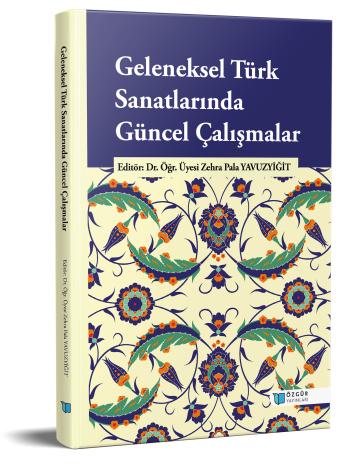
Ornamental Characteristics of Metal Artefacts Attributed to Turkey in the Metropolitan Museum
Chapter from the book:
Pala Yavuzyiğit,
Z.
(ed.)
2024.
Current Works in Traditional Turkish Arts.
Synopsis
Introduction and Purpose: In addition to being used in many places, metals have also served the human instinct of adornment, and have carried jewellery works that combine art and craft to the present day. This research aims to identify the metal artefacts attributed to Turkey in the Metropolitan Museum, known as the ‘Met Museum’, one of the largest and most important museums in the world, by examining them in terms of technique, size, raw material, motif, decoration subjects and composition features.There are many artefacts that have developed with the discovery of metals from the body decoration traditions of primitive societies and the birth of jewellery and have survived to the present day. It is important to examine the characteristics of these artefacts.
Materials and Methods: The study was conducted with the survey method. In the scientific survey model, literature review and artefact examination were carried out. The artefacts selected in this research are five belt buckles, one turban ornament, one buckle, one helmet, one tweezers and one mirror. The technical motif and composition features of the artefacts were examined and detailed drawings were made. The techniques seen in these ten selected artefacts are filigree, granulation, enamel, tombstaking, relief, pinning, pencil and casting techniques. Another subject analysed in the works is ornamentation. The rich motifs of Turkish art appear in jewellery making as in many other branches of art. Although there is a variability of motifs in line with jewellery techniques, the most well-known motifs in general terms are; animal motifs, floral motifs and geometric motifs.
Results: The analysed artefacts are generally well preserved and are good examples of their period. The techniques seen in these ten selected artefacts are filigree, granulation, enamel, tombing, embossing, embossing, pinning, pencil and casting techniques. Another subject analysed in the works is ornamentation. The rich motifs of Turkish art appear in jewellery making as in many other branches of art. Although the motifs vary in accordance with the jewellery techniques, the most well-known motifs in general terms are as follows; animal motifs, floral motifs and geometric motifs. Meticulous workmanship and possibly valuable pieces for the wearer, depending on their taste and wishes or according to the standards of the period, have been produced and have survived to the present day. Although it is not possible to make definite judgements about the manufacturer in general, it is possible to say that the jewellery was produced by master hands. Since the artefacts could not be observed in person, they were transferred and interpreted in line with the information obtained from the Metropolitan website.

